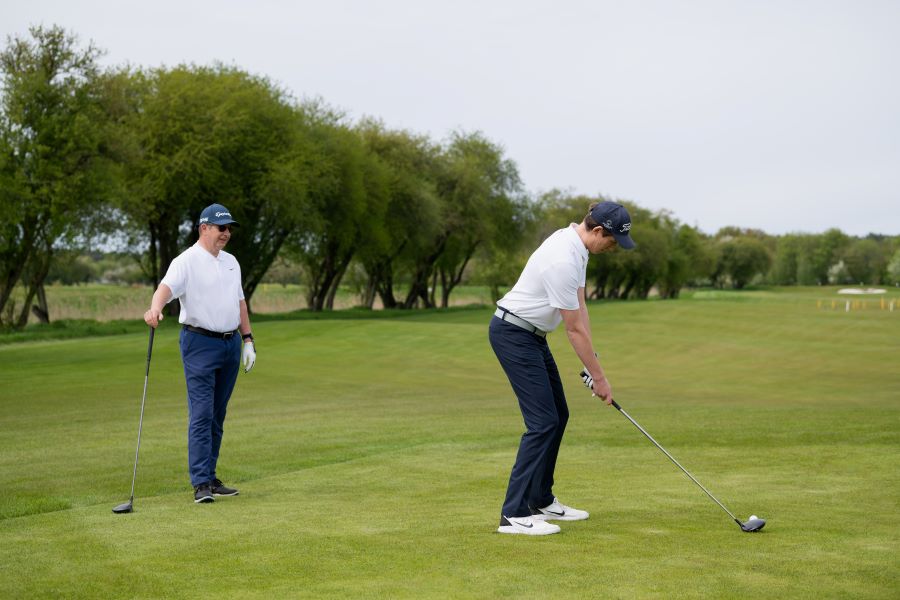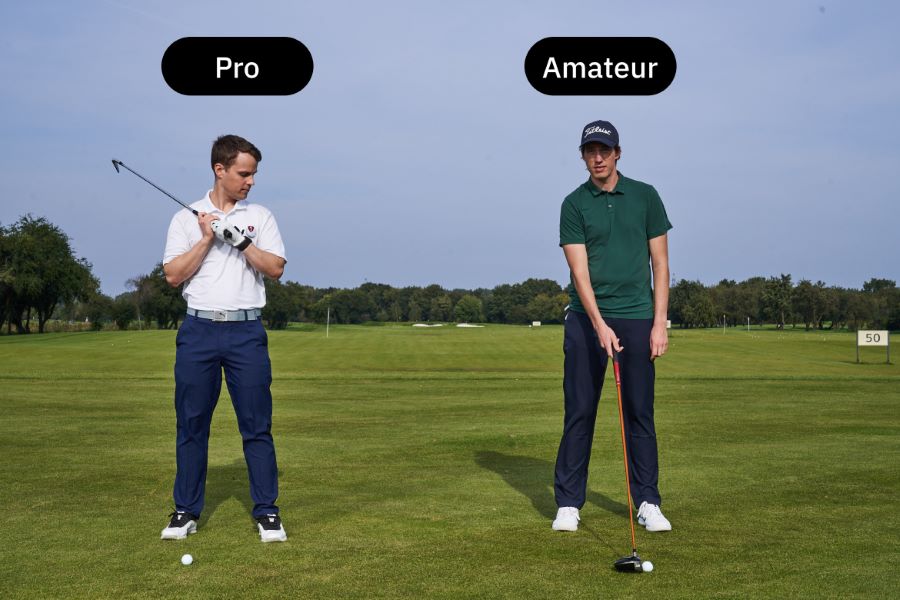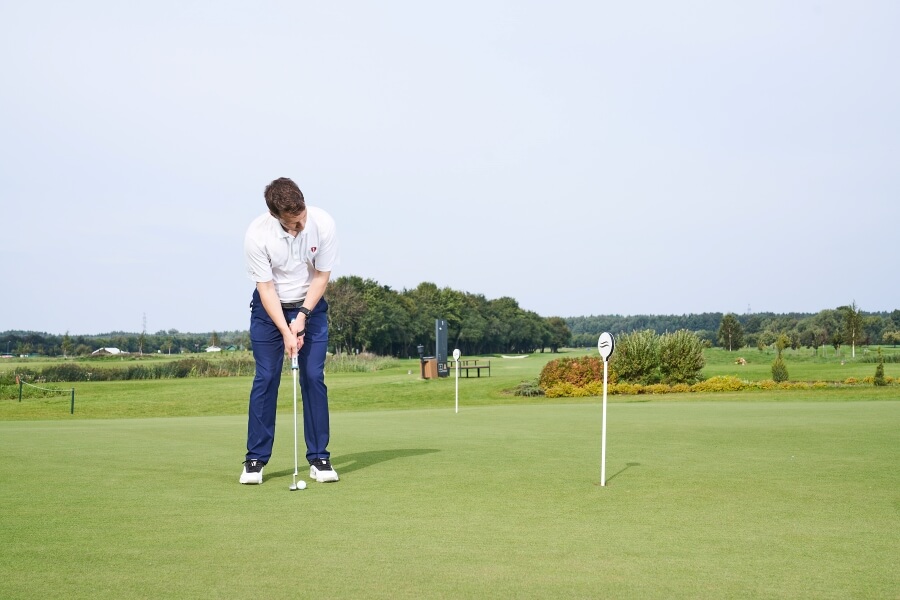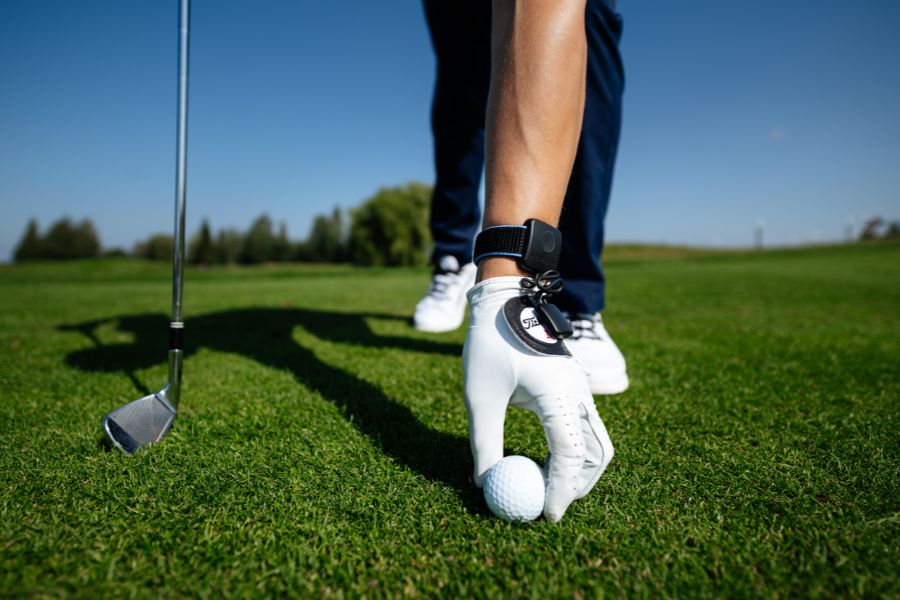12 Tips for Playing Golf in the Rain That Will Keep Your Scorecard Tidy
If you are a die hard golfer, a little rain isn’t going to stop you. Playing golf in the rain is sometimes easier than in the wind!
The key to playing great golf in the rain is making sure that you are prepared for the conditions. I’ll show you the best tips for playing golf in the rain, how to prepare, and some ways to keep your head in the game on those rainy days.
Tips to Play Golf in the Rain – Too Long, Didn’t Read
If you are heading out right now to play some golf in the rain, here are a few quick tips to get you started.
- Do everything possible to keep your hands dry when you can’t use rain gloves that provide superior grip regardless of the condition.
- Dress in layers and make sure the outer layer is a waterproof material.
- Use soft spikes as opposed to spikeless shoes to ensure you stay stable and grounded throughout your swing.
- Keep an umbrella and two extra towels in your golf bag.
- Remember that the ball is not going to roll all that far; play an extra club and hit your chip shots so they land a little closer to the hole.
Contents
- Can You Play Golf in the Rain?
- Should You Play Golf While It’s Raining?
- Is it Worth Playing Golf in the Rain?
- What Causes Golf Courses to Close for Rain?
- 12 Tips for Playing Golf in the Rain
- 1. Use Spikes
- 2. Wear Rain Gloves
- 3. Keep the Clubface Square with Wrist Control
- 4. Wear Waterproof Clothing
- 5. Wear a Wide Brim Hat
- 6. Carry 2 Dry Towels
- 7. Dry Your Clubs and Gloves Before Every Shot
- 8. Take More Club
- 9. Increase Your Putting Backstroke
- 10. Beware of Putting From Off the Greens
- 11. Use a Double Canopy Umbrella
- 12. Keep Extra Dry Clothes
- FAQs
- Summary
Can You Play Golf in the Rain?
Yes, you can play golf in the rain, I’ve done so for 29 years. The only time you’re prevented from playing golf in the rain is when lightning accompanies it, and it becomes highly dangerous for any player to be on the course.
Just ask Retief Goosen, who was struck by an electrical charge when he was 15.
Should You Play Golf While It’s Raining?
Yes, I highly encourage playing golf in the rain to help you build your skills in any condition. If you never play casual rounds in the rain, you implode when facing wet weather in competitions. I learned my lesson quickly as a youngster because I despised the downpours.
However, as I reached my later teen years and began playing competitive golf locally and abroad, my earlier decisions haunted me. I was unable to make smart decisions in the rain because I’d not prepared for the occasion.
Is it Worth Playing Golf in the Rain?
Yes, it’s worth playing golf in the rain and learning how to deal with the situation. It changes your club selections and strategy and eliminates roll, putting your distance control to the ultimate test.
Granted, golf in the rain is less than enjoyable, but if you want to improve your game and lower your scores, you’ve got to know how to do it come rain or shine.
What Causes Golf Courses to Close for Rain?
Although there is no rule that forces golf courses to close for rain, the greenskeeper may take an executive decision in extenuating circumstances. My home club growing up, often had to resort to closing the course during the summer due to torrential falling in the late afternoon and a weak drainage system.
If the club opened the course, the ground would be wrecked, and it would take months to repair, aggravating the members.
Instead, the golf course closed for a day for maintenance, reopening with the affected areas operating as ground under repair.
Besides potential damage to the turf, golf courses may close for rain if it’s accompanied by lightning. However, this tends to be a temporary stoppage, and play is resumed after a 20 to 30-minute wait.

12 Tips for Playing Golf in the Rain
Playing golf in the rain could increase your score by a shot or two. However, the playing field is leveled when rain starts to come into play. If you can stay the toughest person out there and keep your strategy in line, you can come out on top.
1. Use Spikes
In my experience, spikes work better in the rain than spikeless shoes. Given the added traction they provide on soft turf.
Slipping and sliding on the wet turf can cause you to frequently lose my footing, power, and control of the clubface.
Although you’ll find several golf shoes with soft spikes, not all are waterproof. I recommend finding designs with Gore-Tex-like membranes that prevent moisture from penetrating the material, keeping your feet dry throughout.
2. Wear Rain Gloves
Rain gloves work better the wetter they get. Keep rain gloves in your bag for any time you run into a situation on the golf course.
Unlike your standard design, you wear a glove on each hand to keep your hands dry and optimize your grip.
3. Keep the Clubface Square with Wrist Control
When the golf ball is wet, the grass is wet, and even your hands get wet, keeping the clubface square at impact can be hard. To ensure you can do this, learn to gain control of your wrists in your golf swing.
The wrists control the clubface in your golf swing.
Wear the HackMotion golf swing analyzer during your practice and get to the correct positions at the top of your swing and again at impact. Learning to control and manipulate the clubface with your wrist angles will help in any type of weather condition on the course.

4. Wear Waterproof Clothing
Waterproof clothing may not improve your golf swing mechanics, but it will keep you warm, dry, and comfortable to avoid distracting you.
Your golf bag has a large side pocket that is a perfect place to keep a rainsuit and all of your rain gear. Make sure you have both pants and a jacket and that they are not just water resistant but also waterproof.
5. Wear a Wide Brim Hat
A wide-brim hat is a smart option in the rain because it prevents raindrops from trickling directly on your face. It’s easy to get distracted easily if raindrops hit your face during my swing, and the wide brim provides that added layer of protection.
Look for a wide brim hat that is waterproof so it doesn’t get overly heavy on your head as you make your way around the course. You may want to bring a dry hat for when the rain stops.
6. Carry 2 Dry Towels
Dry towels are imperative during a wet round to keep your hands, gloves, and grips as dry as possible.
I carry 2 dry towels to ensure a rainless option is always available. I made the mistake of taking 1 towel in the past, which was soaked before I reached the turn.
Besides the towels for drying my grips, hands, and gloves, I ensure I have a cloth to wipe my clubfaces.
In rainy weather, mud, dirt, and sand will accumulate on your clubs quickly. Make sure to wipe them down before each swing to see the best results.
7. Dry Your Clubs and Gloves Before Every Shot
On the theme of towels, my next tip is to dry your grips, gloves, and hands before every shot. If moisture remains on the surface of your grip or gloves, it reduces friction, leading to less control over the golf club.
Let’s not forget that the thought of your clubs being slippery may also cause you to slow down and even decelerate through the golf ball.
Expect some inaccurate shots with a wet grip.
8. Take More Club
Take a little more golf club when playing in the rain. Depending on the amount of rain (and factoring in any wind), you will need about 5 to 10 yards extra.
The reason for this is that you will need more carry distance as the turf won’t allow for as much roll; the second is the loss of clubhead speed the rain can bring.
If I am 164 yards from the flag, I hit a 6-iron on a clear day and enjoy a few extra yards of roll up to the cup. Since I lack that luxury in the rain, I take a 5-iron instead.
In addition to taking more club, ensure you have a flat left wrist at the top of your golf swing and a little more flexion at impact. Compressing the golf ball through impact will increase total distance and help you reach your target.
Read More: Best Golf Driving Tips.
9. Increase Your Putting Backstroke
The saturated greens after a rainstorm are slow and require more power than usual for a putt of the same length.
For example, I employ the same length backstroke for a 15’ putt on a wet green as I do for a 20-footer in dry conditions.
After using the measuring tape drill for decades, I am familiar with my optimal backstroke length for 10, 15, 20, 30, 40, and 50’. That makes it easier for me to adjust my speed and power on soaked dance floors.
10. Beware of Putting From Off the Greens
Putting is almost always the shot of choice for amateur golfers whose golf ball lands just off the green. However, if you are putting from off the greens in the rain, you may really struggle to get the ball to the hole.
Instead, use a bump-and-run shot or even a more lofted wedge, as you can get the ball closer to the hole.
Lastly, although I always prefer putting when I can, I avoid using my flat stick from the greenside fairway in the rain.
The grass is too heavy and slow, making it difficult to judge and get the ball to the cup. Instead, I prefer playing a chip shot to get the ball airborne and over some thicker wet turf.
11. Use a Double Canopy Umbrella
Using an umbrella is ideal for keeping you and your golf clubs dry.
A double canopy umbrella with over 68” coverage keeps your clubs, bag, and spare towel dry. In addition, it shelters your face from direct raindrops, which is annoying and can cause discomfort.
A double canopy umbrella fights against inversion and withstands higher wind speeds than its single relatives.
12. Keep Extra Dry Clothes
My final tip for playing in the rain revolves around keeping comfortable and enjoying your round.
I also take a spare pair of socks, pants, and a polo on rainy days to change into for the 19th hole.
Playing another 9 holes drenched, cold, and frustrated is not an option, and warm, dry clothes offer a sound solution.
You can store your dry clothes in the apparel slot of your bag if it has sufficient space. However, I prefer to leave them in the changeroom, where they remain dry.
FAQs
How do you hit a golf ball out of a wet rough?
You hit a golf ball out of wet rough by minimizing contact between the clubhead and the grass prior to impact.
When the clubface catches wet grass, it slows your swing speed and momentum, resulting in weak contact and a loss of ball speed and distance. In addition, maintain higher levels of speed through impact.
How do you hit irons on wet fairways?
You hit irons on wet fairways by setting up with a forward shaft lean, shallow the shaft on the downswing, and striking the ball before the turf. Make sure you have a slightly flexed lead wrist at impact.
This approach boosts your compression at contact, accelerating ball speed and producing a towering launch.
Is it Worth Playing Golf in the Rain?
Yes, it’s worth playing golf in the rain and learning how to deal with the situation. Playing golf in the rain changes your club selections and strategy. If you end up playing in a golf tournament and it starts to rain, you will want to have at least some experience with playing in the rain.
Summary
Playing golf in the rain enhances the challenge of the sport. More club is required on every shot to boost carry distance, while waterproof clothing is essential to remain dry, comfortable, and relaxed.
In addition, ensure you dry your grips, hands, and gloves before every shot to increase friction.
Finally, I recommend operating with spikes in the rain to elevate your grip on the turf. Otherwise, you risk losing your balance and power on the downswing, prompting a weak, wayward launch.
If you are really looking forward to getting out on the course and the rain kicks in, don’t be afraid to head out there and play golf in the rain.















